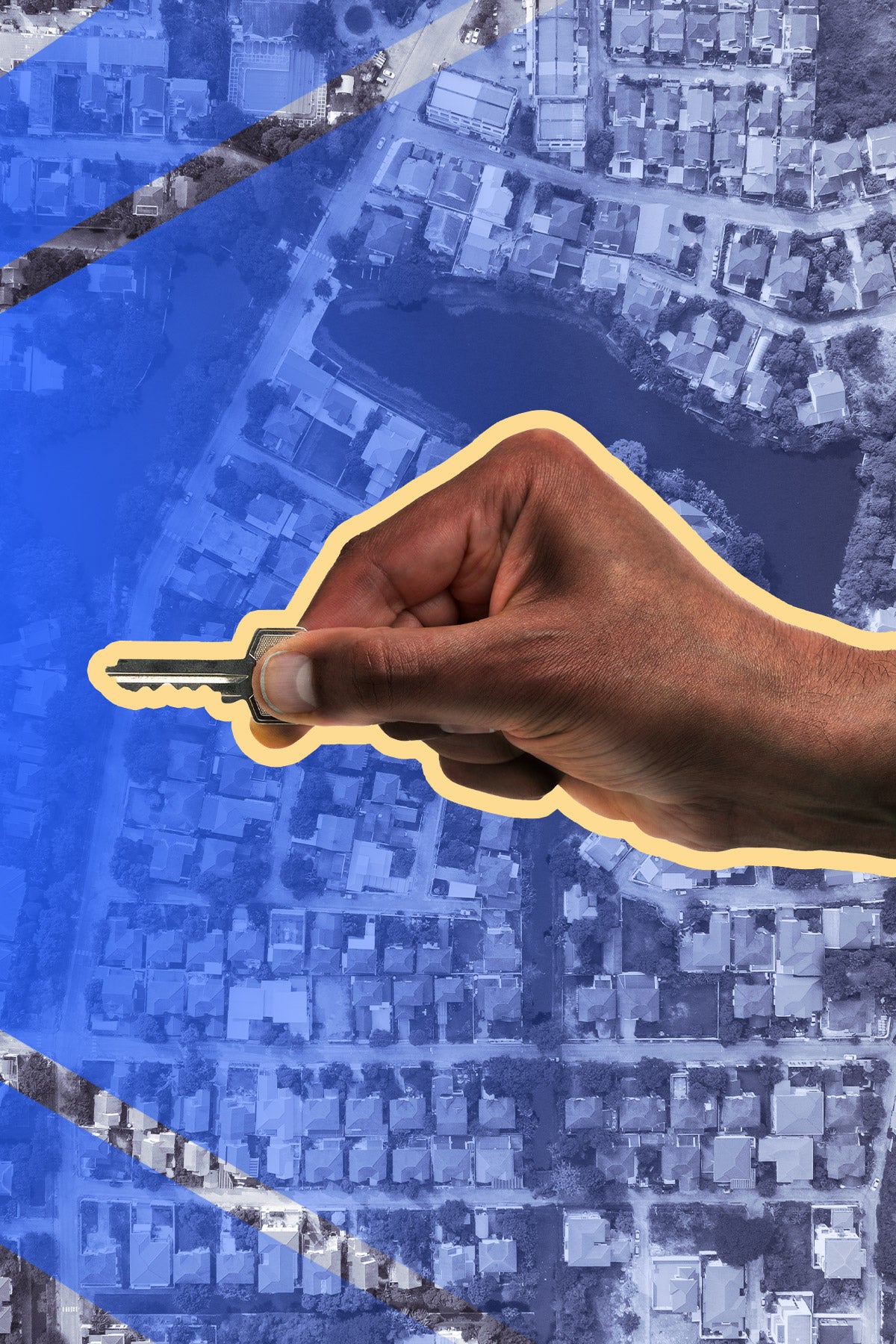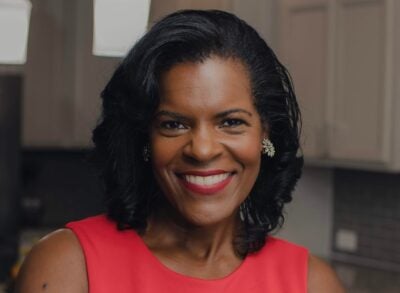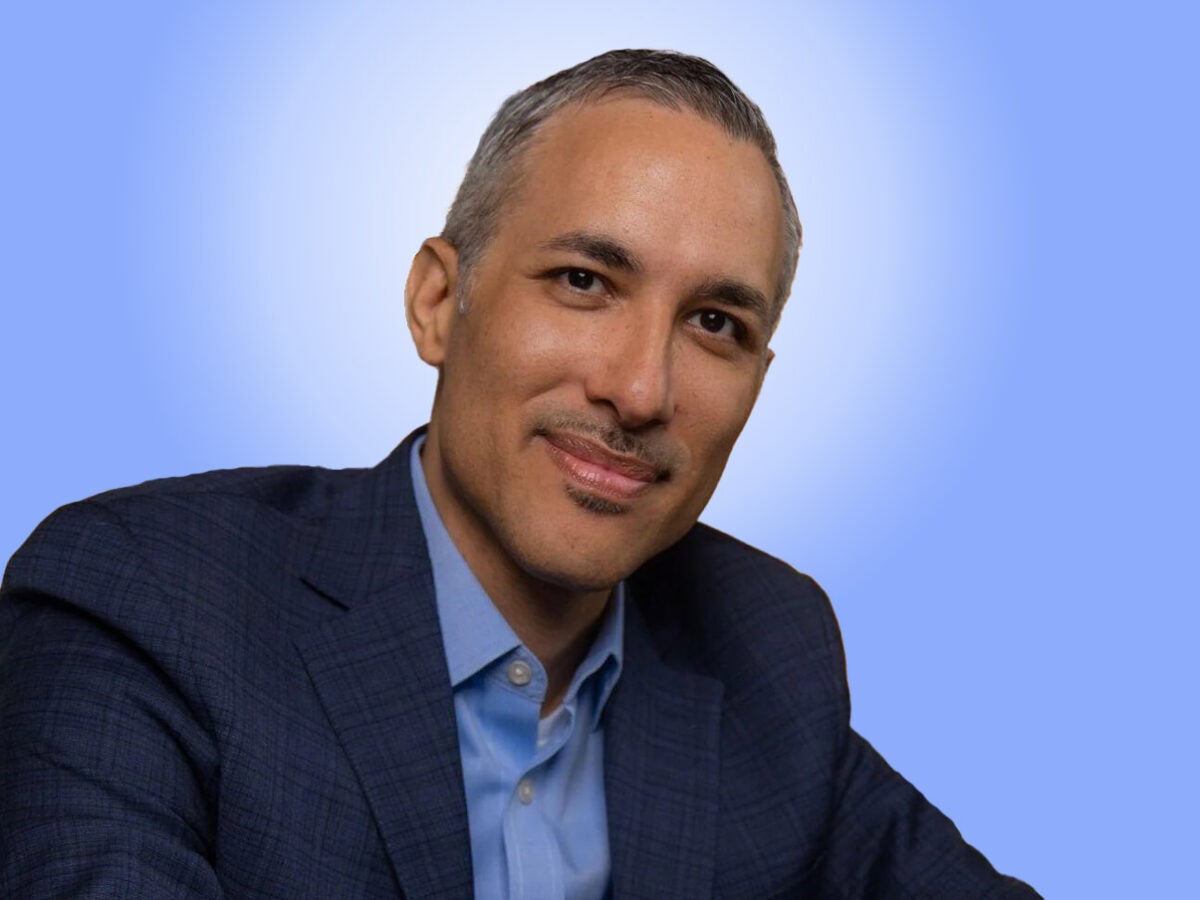
Equity
For Black Americans, homeownership can mean better health
Christopher Sistrunk sees a symbol of housing inequality every day on his drive to work as a cancer researcher. He passes a highway that stops abruptly before a wealthy neighborhood and then resumes on the other side. Affluent White communities rarely contend with highways bisecting their neighborhoods, but for many Black Americans, this is an all-too-common reality. “If you’re living in a place that’s been redlined, where industries are polluting the soil or water, where highways and concrete run through everything … the level of hidden stresses is enormous,” Sistrunk says, “and the health impact can be devastating.”
Sign up for Harvard Public Health
Delivered to your inbox weekly.
Sistrunk’s research shows that Black communities experience a 30 percent higher death rate from cardiovascular disease versus predominantly White ones—even when controlling for socioeconomic status. “There is a direct connection,” he and his coauthors wrote in 2022, “between disparities in housing and disparities in cardiovascular disease incidence and mortality.
As a molecular and cellular toxicologist at City of Hope, a comprehensive cancer care center in Duarte, California, Sistrunk also studies the connections between the environment, including housing, and health disparities. Research shows that living in an area with abundant resources and solid infrastructure—such as good schools, quality supermarkets, and health care facilities—is beneficial for health. “Where you buy a home matters,” Sistrunk says. Historically, he notes, Black Americans have been prevented from buying homes in well-appointed communities.

Today, only 45 percent of Black Americans own homes—while 75 percent of White Americans do. That gap in owning homes is well-documented as a systemic driver of health disparities. Broadly speaking, “homeownership … is linked with improved health,” says Craig Pollack, a professor at Johns Hopkins Bloomberg School of Public Health whose research includes housing and health policy. Studies from Freddie Mac, the Fair Housing Center for Rights & Research, the New York Academy of Medicine, and others have shown that housing impacts people’s overall wellness.
Homeownership has many other benefits, which is why billions of dollars of government aid has been invested over decades to boost the number of Black home owners. Such efforts have had little success. By some measures the divergence in ownership is wider today than roughly 50 years ago, when redlining and other structural forms of housing discrimination such as exclusionary zoning or restrictive covenants in property deeds, which barred home sales to Black buyers were still legal. The divergence persists despite efforts such as the 1977 Community Reinvestment Act, passed by Congress to reduce inequities in access to credit faced by low-to-moderate-income individuals and families, who then as now were disproportionately people of color.
Why haven’t we seen more movement and growth when it comes to Black homeownership?
“The degree to which these problems are systemically embedded in society is a main driver,” says Raheem Hanifa, a housing researcher at Princeton University’s Eviction Lab. He points to everything from the legacy of slavery to discriminatory credit lending systems to income disparities as factors that continue to block Black households from homeownership.

“The 1930s, ’40s, and ’50s were among the greatest periods of wealth generation in our country, yet Black people were largely excluded from that,” Hanifa says. For example, 98 percent of federally insured mortgages from those decades went to White households because Federal Housing Authority guidelines prohibited loans to Black borrowers. Meanwhile, another key New Deal program, the G.I. Bill, helped dramatically boost the White homeownership rate in America, but was largely off-limits to Black veterans post World War II. “Layers upon layers of policies and the effect of those policies” reinforce inequality and inequitable outcomes, Hanifa notes.
Similarly, inadequate housing creates layered health disparities, according to Sistrunk. Some of these are easy to quantify: exposure to pollutants, the inaccessibility of nutritious food, the availability of nearby health care facilities. Other health problems are often missed until they have done great damage: the chronic stress of living in substandard or insecure housing exacerbates hypertension and diabetes. The psychological burden of housing instability can contribute to mental health challenges, including anxiety and depression.
Three million new Black homeowners by 2030
New, broad-based public-private partnerships are trying different ways of closing the housing gap.
The Black Homeownership Collaborative aims to succeed where the Community Reinvestment Act and other initiatives have not. The collaborative was founded in 2021 to create three million new Black homeowners by 2030, which would boost Black homeownership rates above 50 percent. The initiative brings together more than 100 organizations committed to dismantling barriers to sustainable Black homeownership. Partners include real estate groups, civil rights advocates, major lenders, and government agencies.
Participants are cautiously optimistic that the collaborative will finally move the needle, primarily because of its holistic approach and integrative activities among various stakeholders. The initiative has adopted a seven-point strategy that tackles not just barriers to homeownership, but also addresses the pitfalls Black homeowners face in retaining their homes:
- homeownership counseling, including prepurchase and post-purchase counseling;
- down payment assistance, to provide financial support to prospective homebuyers;
- housing production, to address the critical shortage of affordable housing in the U.S.
- credit and lending, to create and fund special-purpose credit programs that boost homeownership;
- civil and consumer rights protection, to ensure the federal government enforces existing fair housing and consumer protection laws;
- homeownership sustainability, to focus on foreclosure prevention; and
- marketing and outreach, to develop a targeted marketing and advertising campaign directed at “mortgage-ready” Black homebuyers.
The program aims to be something of a Marshall Plan for Black homeownership, says Bryan Greene, vice president for policy advocacy at the National Association of Realtors and co-chair of the collaborative.
Ideas like special purpose credit programs and down payment assistance initiatives specifically targeted to Black people show real promise, says Princeton’s Hanifa. “If you’re not talking about homeownership through the lens of race, you’re going to have a hard time closing these gaps,” he says.
The collaborative’s approach to intentionally addressing racial barriers in homeownership mirrors trends in health care toward more holistic and culturally competent care that acknowledges health disparities in the Black community. Health care providers are increasingly adopting strategies that consider the social determinants of health, recognizing that factors such as housing, education, and employment are intertwined with health outcomes.
Still, just as stubborn health care disparities persist, so too do challenges in making a meaningful impact on the Black homeownership rate. Rising interest rates and high home prices make the collaborative’s goal much more difficult now than when it launched more than two years ago. Interest nearly doubled in the few years following the pandemic, and median home prices in the U.S. have hit $431,000, meaning buyers in many U.S. markets need six-figure incomes to purchase property. Hanifa calculates that 600,000 fewer Black households could afford a home than was true two years ago.
Greene concedes that cracking the 50 percent level represents a huge challenge, not least because long-discarded policies continue to reverberate in the housing market. “We’re seeing the downstream effects of one hundred years of exclusion,” he says. The advantages that White Americans have enjoyed are accelerating, Greene says, because “having wealth begets more wealth.” He adds that by the same token, “disadvantages also compound.”
The collaborative’s multifaceted approach seeks to address the myriad challenges Black people face during the entire homebuying journey. “That we have these industry trade associations working hand-in-glove with housing advocacy, civil rights, and other nonprofits is exceptional,” he says.
Increasing Black homeownership will help address racial health disparities.
If it can increase the percentage of Black homeowners, the collaborative could have a significant influence on mental and physical health outcomes, says Johns Hopkins Bloomberg’s Pollack. This is especially so because homeownership is the largest source of wealth for most people. Wealth—which is distinct from income—has been linked to better mental and physical health, Pollack says. He notes a growing body of research is establishing how different elements of housing affect health, including:
- Housing stability. Knowing you have a home is crucial for well-being. Homelessness or housing insecurity leads to higher risks of poor health outcomes. Providing affordable housing has been shown to help previously homeless individuals better manage chronic physical and mental health conditions.
- Housing quality and safety. Exposure to lead paint, asthma triggers like mold, pests, poor ventilation, and temperature extremes inside homes are all linked to adverse health effects, especially for children. Remediating these housing hazards directly reduces risks like lead poisoning, respiratory issues, and injurious, sometimes deadly falls among the elderly.
- Housing costs. Spending on housing determines available income for health necessities like food, medicine, doctor visits, and health insurance. Families struggling with severe cost burdens often choose to cut back on health care. With more affordable rent or mortgage payments, low-income households report a greater ability to afford medical costs and prescription drugs.
- Neighborhood characteristics. Access to public transit, grocery stores, safe parks, and green spaces encourages healthier behaviors. High levels of pollution, crime, blight, segregation, and poverty or disinvestment within neighborhoods contribute significantly to chronic stress, obesity, and poor mental health.
Efforts to close the homeownership gap gather steam.
There are signs that the collaborative’s cross-sector efforts are making headway. Black homeownership increased by two percent from 2019 to 2021, or more than 261,000 new Black homeowners, according to the Urban Institute, a partner in the collaborative. Its early estimates show a net gain of 80,399 Black homeowners in 2022.
It remains to be seen how much gain in Black homeownership, if any, has happened during 2023, particularly given this year’s interest rate hikes by the Federal Reserve.
The collaborative is not the only effort to address persistent homeownership gaps between White Americans and others. At the federal level, South Carolina Senator Tim Scott introduced in April 2023 the Renewing Opportunity in the American Dream (ROAD) to Housing Act, providing education, incentives, and down payment assistance to aspiring minority buyers. The bill is still in the draft stage and has not yet come up for a vote. Also on the policy front, cities ranging from Albuquerque to Boston to Washington D.C. have announced local programs to increase Black homeownership.
The national nonprofit Habitat for Humanity, working with a “transformational” $436 million donation received in 2022 from MacKenzie Scott, has expanded work to help Black renters become homeowners. Additionally, major banks have their own initiatives although a Bloomberg report suggests they have underdelivered on goals. This outcome highlights the reality that despite many organizations setting ambitious goals to close the homeownership gap, achieving those goals often proves elusive.
As Greene acknowledges, “It’s going to be a race to the finish to get to a net of three million new Black homeowners by 2030.” But the work truly matters, he says, noting “that homeowners have 40 times the wealth as renters speaks to how much more advantaged homeowners are when it comes to being able to provide healthy, stable environments for their families.”
Top image: Cunaplus_M.Faba / iStock; structuresxx / Adobe Stock



